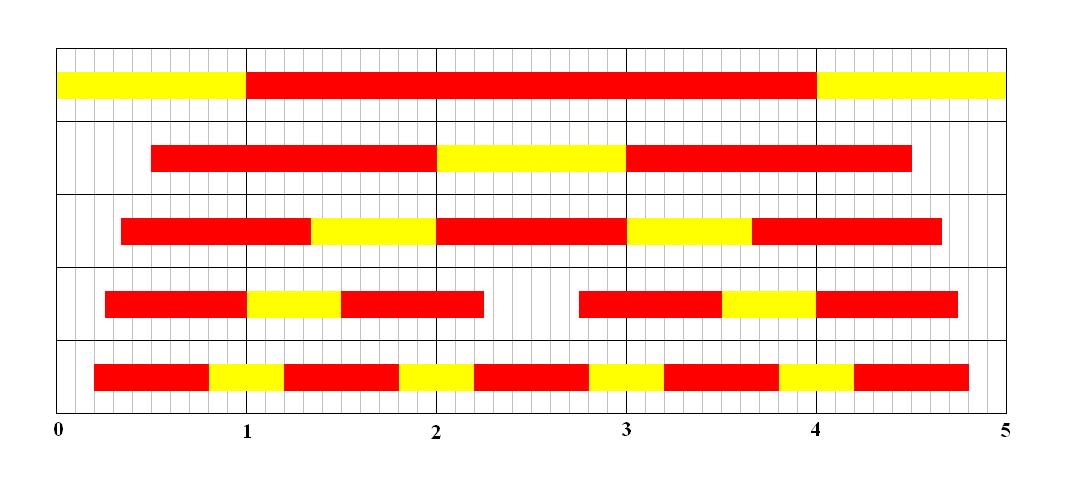It was proved here that if $a\in \mathbb{N}_{\geq3}$ then
$$\bigcap_{i = 1}^{a} \bigcup_{j = 0}^{i-1} \left[\frac{1+aj}{i},\frac{a(j+1)-1}{i}\right] = \varnothing \tag{1}$$
It may be conjectured that forcing $i\ne b$, where $1\leq b< a$, renders $(1)$ untrue, that is, the result is not an empty interval.
We look at the diagram here from the link above for $a=5$ to get a better picture:

Red is the interval, Yellow are the gaps between the intervals that cause the intersection to be a null set, white gaps do not effect the intersection. The conjecture here says that if we were to remove any one of the top $4$ strips, then there will form a region of intersection.
I tried analyzing the gaps but everything seems to meet up at a dead end.
What tools may one employ to handle such problems?
